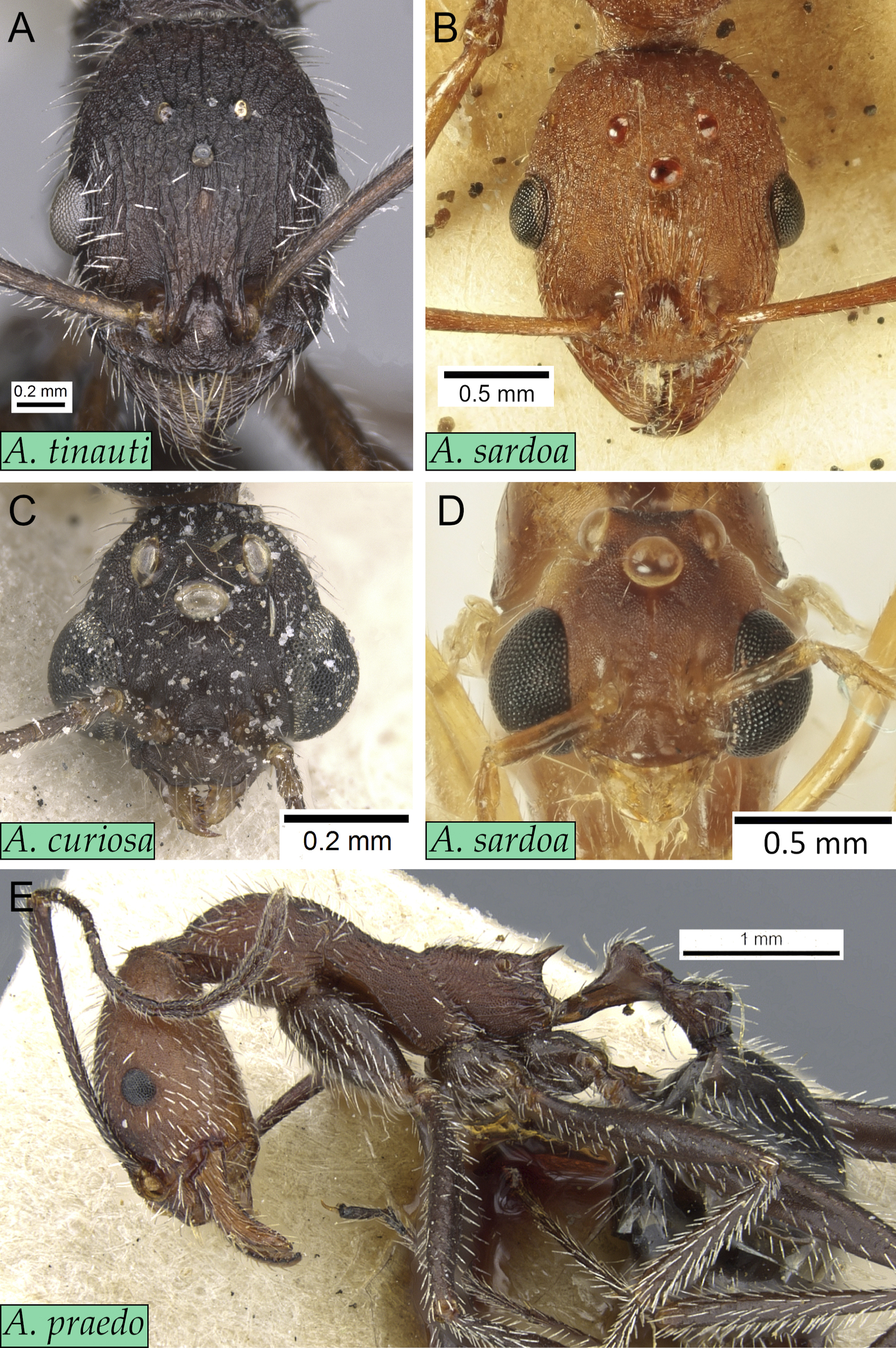
|
||
|
Aphaenogaster species from the sardoa group. Photographs B and D depict A. sardoa specimens from Sicily (queen and male respectively, photos by E. Schifani). Photographs A, C, E are from www.antweb.org: A A. tinauti queen (CASENT0913796, photo by W. Ericson); C A. curiosa male (CASENT0913109, syntype, photo by W. Ericson); E A. praedo worker (CASENT0904158, syntype, photo by Z. Lieberman). Our reassessment suggest that most characters used by Boer (2013) to keep A. sardoa separate from the species of the former testaceopilosa group are not consistent: the eyes of queens and males of A. sardoa are not larger compared to those of other species of the group (A, B), males with relatively small mandibles are not unique to A. sardoa (C, D), and workers of A. sardoa are not the only ones to have a naturally reddish pigmentation (E). |